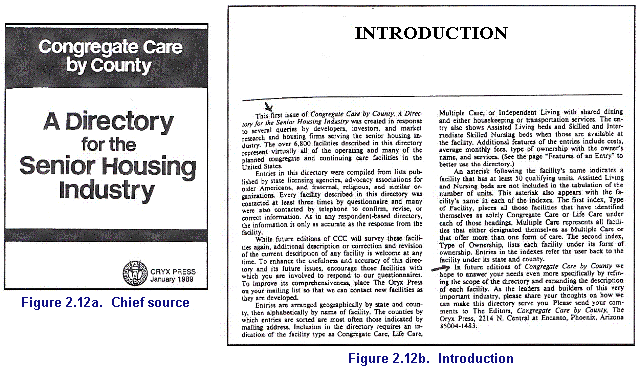Cataloger's Reference Shelf
CONSER Cataloging Manual
2.3. What to do when the appropriate treatment is unclear
In the discussion of types of publications covered in sections 2.1 and 2.2, the assumption has been made that the issuing pattern is known or can be predicted with confidence. What happens when only one issue is in hand and that issue has a designation but does not indicate that further issues will be published? Or what happens when a resource is issued electronically and there is no clear indication that it will be regularly updated and what form the updates will take?
2.3.1. Search shared databases and online catalogs
Catalogers today have a wide spectrum of databases and catalogs in which to search. CONSER catalogers always begin by searching OCLC. They may also choose to search individual library catalogs, particularly national library catalogs from other countries.
Search for both serial and monograph records and apply the following guidelines:
![]() If a serial record is found for the publication in hand, treat as a serial, particularly if the record is a CONSER record (unless "xlc" or "xnlc" is found in field 042, see CEG 042 ).
If a serial record is found for the publication in hand, treat as a serial, particularly if the record is a CONSER record (unless "xlc" or "xnlc" is found in field 042, see CEG 042 ).
![]() If a serial record is found for what appears to be an earlier or later title, treat as a serial.
If a serial record is found for what appears to be an earlier or later title, treat as a serial.
![]() If a monograph record is found for the same issue and there are no records for other issues, prefer to treat as a monograph.
If a monograph record is found for the same issue and there are no records for other issues, prefer to treat as a monograph.
![]() If monograph records ( FN5) are found for multiple issues (other than or in addition to the one in hand), consider treating as a serial if the records indicate a regular pattern of issuance.
If monograph records ( FN5) are found for multiple issues (other than or in addition to the one in hand), consider treating as a serial if the records indicate a regular pattern of issuance.
For example: 1992 is in hand; records are found for 1988, 1989, 1991. Consider it to be an annual and catalog as a serial.
![]() Local policies can also determine how the resource is cataloged (e.g., conferences).
Local policies can also determine how the resource is cataloged (e.g., conferences).
Before implementation of code "i," textual integrating resources were coded bibliographic level "m" (monograph) and a continuing resources field 006 was added to code continuing aspects of the resource. Beginning June 2006, catalogers create records for textual integrating resources using the continuing resources 008 fixed field and bibliographic level code "i." However, CONSER and BIBCO members will not be able to authenticate bibliographic level "i" records in the continuing resources format until details regarding authentication codes and distribution through LC and CDS are worked out. In addition, CONSER and BIBCO members are also asked to not convert any LC records created under the "interim" practice, or any LC monograph records for integrating resources created before 2002, until LC finishes its plans for converting and distributing them.
2.3.2. Look further at the piece
If a database search does not help, and the obvious clues are missing (e.g., volume numbering, ISSN on a successively issued resource, frequency in title, subscription information, statement of updating practice, etc.), look at the introduction, preface, letter of transmittal, or, in the case of electronic publications, the “about” pages. Phrases such as "This is our first report ..." or "In future issues ..." are a good indication that the intent is to continue the publication. If the publication is from a government agency, investigate to determine whether the report is mandated by a law or regulation requiring the publication of a report each year.

In Fig. 2.12. the introduction calls this the first issue and mentions future editions. Thus a cataloger might deduce that this is intended to be a serial, even though no chronological designation is given on the chief source.
Consider the contents and nature of the resource. Does the resource contain the type of information that is likely to be issued on a continuing basis? Statistics, directories, reports of activities or research are all types of information that are likely to be issued or updated regularly. If the topic seems finite, of a limited duration, or very specific, it is best to treat as a monograph.
2.3.3. Search publisher's Web sites, etc.
If you are really uncertain as to the nature of the work, a publisher’s Web site may contain further information about the work that will indicate an intention to continue. If you can locate the contact information for an editor or publisher, ask them directly: will there be future editions? etc. Many publications also now contain the e-mail address of the editor.
When all else fails, LCRI 1.0 says when in doubt treat as a serial with some qualification for certain types of materials.
See also: